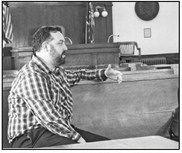Taylor County needs to rethink work week
Faced with challenges in filling positions and escalating personnel costs, Taylor County should look at maximizing their current workforce as much as possible.
As noted by Patrick Glynn of Carlson Dettmann Consulting, the county’s default 35-hour work week for some positions is a barrier to attracting staff.
The standard for work weeks is 40 hours, which translates into 2,080 hours per year. Decades ago, as part of a cost saving measure, the county board switched to a default of 35-hours per week or 1,820 per year.
What this means is that hourly workers on the 35-hour schedule take home 12.5% less than their peers earning the same hourly rate on a 40-hour schedule. This made sense in times when jobs in the area were scarce and the pool of applicants seeking any county jobs were deep. Now, with job seekers able to have their pick of opportunities, it presents an unneeded barrier toward people being able to take county positions.
The county has had people hired to fill spots only to have them leave to go back to their previous employment because they would be making less at the county due to the work schedule. With the costs involved in recruiting, interviewing and bringing someone on board, having them leave county employment right away is a waste.
Beyond recruitment, the county only sort of follows its own 35-hour week schedule. Over the years since it was implemented, departments have sought exemptions for different positions bringing them up to 40-hour weeks. Beyond that, salaried employees such as department heads are routinely expected to put the hours in that are needed to get the tasks done often resulting in longer than 40-hour weeks.
According to human resources director Marie Koerner, only 16% or 29 of the county’s 180 total employees work a 35 hour week versus a 40 hour week. This does not include any of the part-time employees such as some office staff and the nutrition site managers.)
While five hours a week may not seem like a significant amount of time, over the 29 positions it would work out to the county getting the equivalent work of nearly four additional employees over the course of a year. While there are additional payroll expenses through wages and associated costs there would be substantial savings versus adding those staff members, not only through recruitment and training costs but also on the benefi ts side of the pay matrix. As a follow up to revamping its pay matrix, Taylor County leaders should look at revising staffing needs countywide to see if there are areas of duplication or opportunities to share staffing resources. Before filling any new positions, the county must explore if existing staff are being fully utilized or if they have the ability to absorb more duties.
It is time for the county to phase out the 35-hour work week entirely and move to a uniform 40-hour week for county employees.




